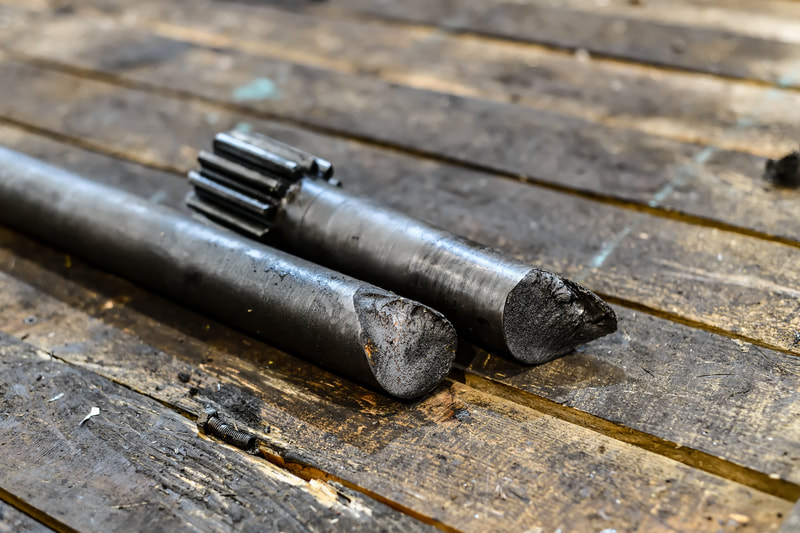- Value Design Ltd
- Services
- Projects
-
Finite Element Analysis
- Introduction to Basic FEA
- Units
- Co-ordinate Systems
- FEA Procedure
- Defining Objectives
- Stress Concentration
- Geometry import / clean up
- Meshing
- Material Properties
- Boundary Conditions
- Solvers
- Investigating FEA Results
- Reporting
- Stress Theories
- Cantilever Beam Worked Example
- Pressure Vessel Worked Example
- Shaft in Torsion Worked Example
- Buckling Worked Example
- Bearing (Contact) Worked Example
- Non Linear Material Worked Example
- Portal Frame Worked Example
- BLOG
- FAQ
- CONTACT
|
Finite Element Analysis (FEA) is a very good tool for providing useful insight to the strength and durability of mechanical components and large structures. It’s often integrated into CAD and anyone can do it. Learning to operate FEA software to check if components are the correct thickness or size is easy. Or is it?……… The answer is yes and no. It is easy to run analysis models and find stress levels but a bit harder to get it right first time. I get a lot of enquiries from clients to fix components that have broken because the FEA was not done properly. Embracing failure is the best way to learn from your own mistakes and those of others. Here is list of common reasons FEA Analysis goes bad! 1. Not checking FEA stresses by hand calculations Only liars never make a mistake, FEA is so easy to get wrong. Simple hand calculations confirm the results are in the right ballpark! 2. Not checking deformation results and load paths Most engineers know what a component should look like under loading. Is it bending in the right plane, does it look right? Is the component displacement really 3 miles ? :) 3. Not checking reaction forces at boundary conditions Is the overall mass correct, do the reaction forces add up and make sense? 4. Relying on the software default settings Most commercial FEA software packages use various tools for speeding up the process such as automatic contact surface detection. The software only does what you tell it to do, it doesn’t know what you need it to do. Anything that is automated should be checked manually. 5. Not knowing how a material fails and using the wrong type of stress Von Mises or equivalent stress is very good for steel but may not be right for some for some castings or plastics. 6. Taking FEA results at face value The peak stress in a model may be a singularity and not real. Components in the real world sometimes have defects. 7. Using symmetry for modal or dynamic analysis In most cases symmetry will lead to missing modes and may be misleading. 8. Not checking for errors There’s no such thing as a perfect FE model. Don’t forget to check mesh convergence, load convergence, contact errors, singularities and any other errors in the solver output. 9. Not knowing how sensitive the model is to boundary conditions Sometimes small changes to the FE model boundary conditions make big differences in the results. Is a single type of load/constraint adequate or do you need to check a range of upper and lower limits? 10. Assuming FEA Analysis is easy! :) Well it is when you know how. These are the most frequent mistakes I see when reviewing FEA Analysis. I'd be interested to hear your experiences.
2 Comments
Abdoulaye Moussa
6/6/2023 04:47:27 am
Excellent presentation of FEA. The software is easy to understand if use often and also have personal access to the key!
Reply
Value Design Ltd
6/6/2023 05:02:59 am
Thanks Abdoulaye, we're glad you liked it.
Reply
Your comment will be posted after it is approved.
Leave a Reply. |
AuthorChris Hall Categories
All
Archives
May 2023
|
- Value Design Ltd
- Services
- Projects
-
Finite Element Analysis
- Introduction to Basic FEA
- Units
- Co-ordinate Systems
- FEA Procedure
- Defining Objectives
- Stress Concentration
- Geometry import / clean up
- Meshing
- Material Properties
- Boundary Conditions
- Solvers
- Investigating FEA Results
- Reporting
- Stress Theories
- Cantilever Beam Worked Example
- Pressure Vessel Worked Example
- Shaft in Torsion Worked Example
- Buckling Worked Example
- Bearing (Contact) Worked Example
- Non Linear Material Worked Example
- Portal Frame Worked Example
- BLOG
- FAQ
- CONTACT



